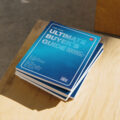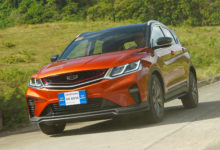Archive Car Reviews March 01, 2014 By Nicolas A. Calanoc
2014 Honda CRZ
Words and photos by Nicolas A. Calanoc
I remember being in an auto show where Honda displayed the CR-Z Mugen with all its racing livery. I remember being all excited because of the way it looked until I heard it was a hybrid. Circling my mind was the question: “How can an economical vehicle be mechanically fun to drive?” When I hear economical driving, words like “fuel-efficiency”, “automatic”, “slow”, “boring”, and “plain” come into mind. I was now then asking myself: “Can this or any hybrid car really be fun?” Instead of sinking to those thoughts, I took a step back for research and a step forward to try it.
echo adrotate_group(2);So, I found out that hybrid cars are more than just having an electric motor. Depending on the goal of the manufacturer, the timing of the use of electric and internal combustion motor varies from model to model. Presently, there are 3 main principles of hybrid vehicles systems. The first hybrid principle is the Series Hybrid. This is when the electric motor handles all the driving while the internal combustion engine acts as a generator that recharges the battery of the electric motor. So at the start of the trip, power is generated from the battery pack to the electric motor to the wheel. When the power of the battery pack is drained, the power is then generated from the generator.
The second type of hybrid principle is the Parallel Hybrid. This is when both the electric engine and internal combustion engine are attached to one transmission, which allows them to power the car at the same time. Fuel powers the internal combustion engine while the generator powers the electric engine.
The third is type of hybrid principle is the Mild Hybrid, wherein the function of the electric engine is to assist the internal combustion engine when more power is decidedly needed. With these 3 hybrid principles, many variations are made in search of which makes the most efficient drive. The two main types of Hybrid Systems out in the market are the Series-Parallel Hybrid and the Mild-Parallel Hybrid.
Also known as the Power Split hybrid, the Series-Parallel Hybrid intelligently uses both the electric and internal combustion engine to power the car to traverse from one point to the other. Depending on the situation of the drive, the vehicle will calculate and determine the percentage between the electric and internal combustion engine that will allow the most efficient drive. This is where a lot hybrids fall in. It does produce the more efficient hybrid between the two, but the driving in return feels artificial.
The second hybrid system is the Mild-Parallel Hybrid, wherein efficiency is derived from the start/stop function and by assisting the internal combustion engine. On a standstill, the engine shuts off. When the vehicle needs to start rolling, the battery starts up the internal combustion engine and the vehicle starts again. This type of hybrid system may not be as efficient as the Power Split method, but it allows the electric motor to be more compact and the driving to feel more mechanical instead of artificial. The latter is where the 2014 Honda CR-Z falls under.
The source of the reason why other hybrids using the Power-Split method have that stigma of being artificial in feel is because the vehicle tries to make the feel of the percentage difference of internal combustion and electric engines unrecognizable. In doing so, the car becomes seamless in power delivery, but sacrifices that dynamic car feel that sports cars do have.
The CR-Z, on the other hand, gets its efficiency not by combining the power of the motors, but by using the internal combustion engine as the primary with the electric engine as secondary. When power is not needed like on a standstill, the electric engine keeps the car alive instead of the idle engine. When the CR-Z then needs to start rolling, the stored energy is used to fire up the engine. And when the driver wants to go fast, the electric engine assists the internal combustion engine. Because of this, you are technically driving a full-fledged sports car that simply has a small electric motor helping on the side.
The best way to describe the 2014 Honda CR-Z is that it is an affordable sports car in its own right, with it being hybrid as secondary. When driving, either economically in the metro or fast in the winding roads that the outskirts have to offer, you will forget that it is actually a hybrid. It maybe a Front-Wheel Drive vehicle, but the handling is so sharp even at high speeds. Because of its little horsepower, torque steer is very hard to experience in the CR-Z. But I assure you, the lack of horsepower doesn’t equate to lack of fun.
If you thought the outside was sci-fi looking, what till you see the inside. The most comments I got about the interior was that it looked like a display a spaceship would have. Calling the CR-Z’s interior a spaceship is perhaps a far stretch, but I would certainly put it in the league of a fighter plane. The speedometer is a reflection-to-glass HUD that displays digits for your speed, with the tachometer using the needle method around the HUD. The extra information is computerized LCDs in a light tone everywhere else around the HUD of the driver. I’ve seen some cars tying to implement such style and fail. The Honda CR-Z, on the other hand, gets it right by minimizing different colors and by using a good lighting scheme. They really took color and lighting to it’s advantage, with using the changing of the colors of the accents to visually cue the driver to the state of his or her drive.
The CR-Z comes in 6 forms because of 3 styles and 2 transmissions. For the styling, you can get it in regular, Modulo, and Mugen. As for transmission, it does come with a 7-Speed CVT transmission and a 6-Speed manual transmission. The question I had asked myself with regards to the CR-Zs and their transmissions was: do the transmissions make a strong standout that they produce 2 CR-Zs with different personalities or does the CR-Z hold out its cohesive idea?
The CR-Z MT is all about the occasion of owning a sports car. The shifter in all 3 MT models are short and crisp, making sure you mechanically feel the switching of gears from one gate to another. The clutch pedal was responsive enough to make those split second gear changes with the softness to drive through heavy traffic if need be. The CR-Z AT, on the other hand, loses these trinkets of pure mechanical driving. You are introduced to paddle-shifts to change gears and a joystick looking gear shifter. In return, you get better fuel mileage because of the more responsive Auto-Stop feature. I wouldn’t be of heavy heart though for the AT version because you can still take it around the track or bending roads and still have a smile on your face.
At the end of the day, the CR-Z lineup does hold its cohesive ground of being a fantastic affordable hybrid sports car whichever variant you get. If the CR-Z MT is the 55% sports car and 45% efficient daily vehicle, the CR-Z AT is the 55% efficient daily vehicle and 45% sports car. Of course, people can debate some things about it. When one sees the standard equipment not being enough, I see a hybrid package less than 2-million pesos, which is difficult to come by. When one sees very tiny back seats, I see a 2-seater sports car with good trunk space when you fold the back seats down, and probably leave it that way. When one sees an underpowered sports car, I see that they haven’t really driven it out yet and they have yet to see.
Honda has hit the sweet spot when it comes to making available a truly fun-to-drive affordable sports car that is also a hybrid. There was a time that petrol-heads dreaded the day when hybrid cars will flourish and rob the feel and excitement of what mechanical driving is all about. Thanks to the Honda CR-Z though, the future of exciting sports cars in the consumer level for hybrids in the Philippines just got brighter.

When you press the S+ button, the display will flash green [READY S+] indicating that the Electric Motor is ready to help the CR-Z gain extra speed and acceleration.
ENGINE: Inline-4, 1,497cc, sohc 16v, i-VTEC with Electric IMA System, 6-Speed MT or 7-Speed CVT
MAX POWER: 130 bhp @ 6000 rpm (Combined) 197 bhp @ 6300 rpm (Combined, Boosted, 6MT)
MAX TORQUE: 140 lb-ft @ 1000 – 2000 rpm (Combined, 6MT) 127 lb-ft @ 1000 – 3000 rpm (Combined, CVT) 158 lb-ft @ 5000 rpm (Combined, Boosted)
0-100 KM/H (0-62 MPH): 6.6 sec.
TOP SPEED (MPH): 160 km/h (100 mph)
FUEL MILEAGE: 16.7 km/L Overall
PRICE AS TESTED: Standard MT PhP 1,390,000.00
Standard CVT PhP 1,480,000.00
Module MT PhP 1,470,000.00
Modulo CVT PhP1,560,000.00
MUGEN MT PhP 1,860,000.00
MUGEN CVT PhP1,950,000.00
+ : Concept car looking, dynamic handling for a front-wheel drive vehicle, very effi cient even when having fun.
– : No leg room for rear seats, obstruction at glass panel in the rear when looking at the rear view mirror.
EDITOR’S RATING: 9.5/10 (6-Speed MT)
9.0/10 (7-Speed CVT)







































